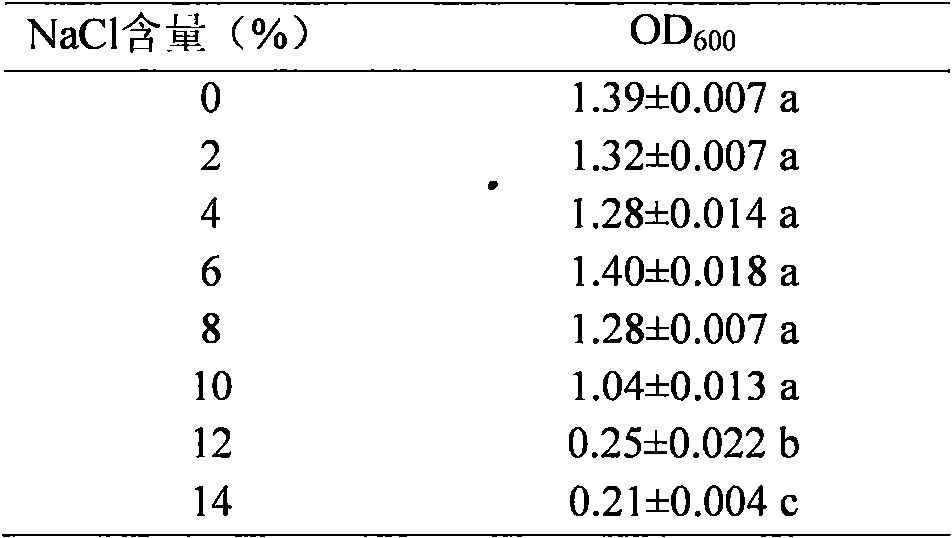Rhodococcus pyridineophilus rp3 with deodorizing and growth-promoting functions and its application
A technology of Rhodococcus pyridineophilus and Rhodococcus pyridine, applied in the field of agricultural resources and environmental protection
- Summary
- Abstract
- Description
- Claims
- Application Information
AI Technical Summary
Problems solved by technology
Method used
Image
Examples
Embodiment 1
[0041] Example 1. Isolation and Identification of Rhodococcus pyridinovorans Rp3
[0042] (1) Isolation of skatole-degrading bacteria Rp3 strain
[0043] The Rhodococcus pyridinovorans Rp3 of the present invention is obtained from sheep manure composted soil, after enrichment, with skatole as the only nutrient, and after dilution and coating, it is separated and obtained, specifically as follows:
[0044] (1) Isolation of skatole-degrading bacteria
[0045] Samples were taken from different sheep manure piles in Yingxian County, Shanxi Province, and samples were taken after multiple sampling points, each sample 500g. cryopreserved and brought back to the laboratory. Add the mother liquor of skatole into a 250mL Erlenmeyer flask, add 60mL of inorganic salt culture solution L2 after the ethanol volatilizes, shake and mix well, so that the final concentration of skatole is 10mg·L -1 . Add 0.1g of composted soil samples into the culture medium, take the culture medium without ...
Embodiment 2
[0059] Embodiment 2, the growth characteristic of Rhodococcus Rp3 bacterial strain
[0060] (1) Effect of temperature on the growth of Rhodococcus Rp3
[0061] Pick a few colonies and dilute to 10 -4 、10 -5 , coated on LB solid plates, placed in 28°C, 32°C, 35°C, 37°C incubators respectively, with 3 repetitions for each temperature gradient, and observed and measured the colony diameter at the 2nd and 7th maximum.
[0062] The results showed that: 28~32℃ was more suitable for the growth of the strain (Table 2).
[0063] Table 2 Effects of different temperatures on the colony expansion speed of Rhodococcus Rp3
[0064]
[0065] Note: Different letters in the table indicate significant difference (p≤0.05)
[0066] (2) Effect of NaCl content on the growth of Rhodococcus Rp3
[0067] The strains were inoculated in LB culture solution with NaCl contents of 0%, 2%, 4%, 6%, 8%, 10%, 12%, and 14%, respectively, at 28°C, 180r·min-1 Shake culture for 48h, measure OD 600 value. ...
Embodiment 3
[0078] Embodiment 3, Rhodococcus Rp3 bacterial strain can remove the inhibitory effect of skatole on the growth of cucumber seedlings
[0079] Cucumber seed germination treatment: bake cucumber seeds at 54°C for 3 hours, let them cool, then sterilize them with 1% NaClO for 1 minute, wash them with sterile water for 5 times, then transfer them to moist sterile filter paper, put them at 25°C to let the cucumbers The seeds germinate.
[0080] Pour L2 medium into a 9 cm two-part Petri dish. Accurately weigh 0.99g of silica and add 0.01g of skatole after high-temperature sterilization, mix evenly, weigh 25mg of the mixture and add it to one side of the plate, so that the content of skatole is 250μg, and put 3 Lubai on the other side of the plate Cucumber seeds of cucumber, CK is adding the same amount of silicon dioxide, treatment T1 is adding silicon dioxide, skatole mixture and the concentration is 2×10 7 Rp3 bacteria suspension, T2 is equal amount of silica and skatole mixture...
PUM
 Login to View More
Login to View More Abstract
Description
Claims
Application Information
 Login to View More
Login to View More - R&D
- Intellectual Property
- Life Sciences
- Materials
- Tech Scout
- Unparalleled Data Quality
- Higher Quality Content
- 60% Fewer Hallucinations
Browse by: Latest US Patents, China's latest patents, Technical Efficacy Thesaurus, Application Domain, Technology Topic, Popular Technical Reports.
© 2025 PatSnap. All rights reserved.Legal|Privacy policy|Modern Slavery Act Transparency Statement|Sitemap|About US| Contact US: help@patsnap.com



